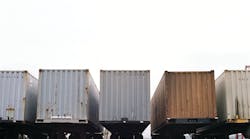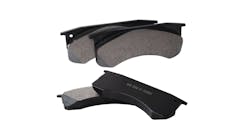Rod Ehrlich, chief technology officer for Wabash National Corporation, offers these maintenance suggestions for getting the most out of trailers.
Wabash National is one of the leading manufacturers of semitrailers in North America, specializing in the design and production of dry freight vans, refrigerated vans, flatbed trailers, drop deck trailers and intermodal equipment. www.wabashnational.com.
1. Trailer Cleaning
- Clean equipment at least once per month; more often in the winter months.
- Road film and chemicals used for snow and ice removal accelerate corrosion, particularly in damaged areas of the trailer where the protective coating may have been scratched or worn away.
- Use a brush and a mild detergent to clean trailers, not a high-pressure spray. High-pressure sprays and harsh cleaners can remove protective finishes.
This is especially important with refrigerated vans, as high-pressure cleaning can force water into the insulation at the sidewall rivet lines, accelerating insulation breakdown and trailer weight gain.
2. Landing Gear Lubrication
- Know your landing gear manufacturer’s lubrication specifications. In many cases, landing gear should be lubricated every three months.
- By neglecting to lubricate according to specifications, there is the risk corrosion issues will shorten the component’s useful life and cause poor/difficult landing gear operation in the field.
3. Address Corrosion Immediately
- Inspect trailers regularly. If corrosion is starting, particularly in areas where impact damage had occurred, address it as soon as possible.
- Clean and re-seal any damaged areas that are beginning to corrode. This will help prevent the corrosion from spreading.
- If there is swelling between two surfaces due to corrosion buildup, remove the fasteners and clean out any debris. Road salts can often work their way into and around fasteners.
- Replace the fasteners and use caulk or filler to prevent moisture and road salts from building up in the void.
- Use a non-metallic barrier film (plastic) between dissimilar metals to help prevent galvanic corrosion.
4. Replace Damaged Base Rail Fasteners Immediately
- Inspect the trailer base rail for missing rivet heads.
- If the base rail is connected to the crossmembers with aluminum rivets instead of steel bolts, these fasteners are susceptible to shear in the event of side swipe damage. Over time, aluminum fasteners are subject to galvanic corrosion which can lead to fastener failure.
- Missing fastener heads reduce floor strength and can lead to catastrophic floor failure.
Be advised: Due to this potential safety hazard, some shippers will refuse to load a trailer with any missing fastener heads in the base rail.
- Replace damaged fasteners in the base rail immediately.
5. Inspect the Inside of Trailers Frequently
- If the scuff liner is starting to come loose from the sidewall, don’t wait to repair it. If two or three fasteners have come out of the scuff liner, it is easy to repair.
- If the top edge of the scuff liner gets loose, it is subject to damage from forklift and pallets. Failure to make the repair could result in having to replace the entire scuff liner, adding unnecessary maintenance costs.
6. Spot Check Electrical Connectors for Corrosion
- If corrosion is starting at the connector, clean and apply electrical grease to help seal the connector against leakage.
- If there are several trailers of the same configuration, check more connectors for the same problem. This can prevent an expensive larger problem down the road.
- If the same type of corrosion is on multiple trailers, consider a different light/connector configuration on new trailer purchases. Replacing lights and connectors can add up quickly.





